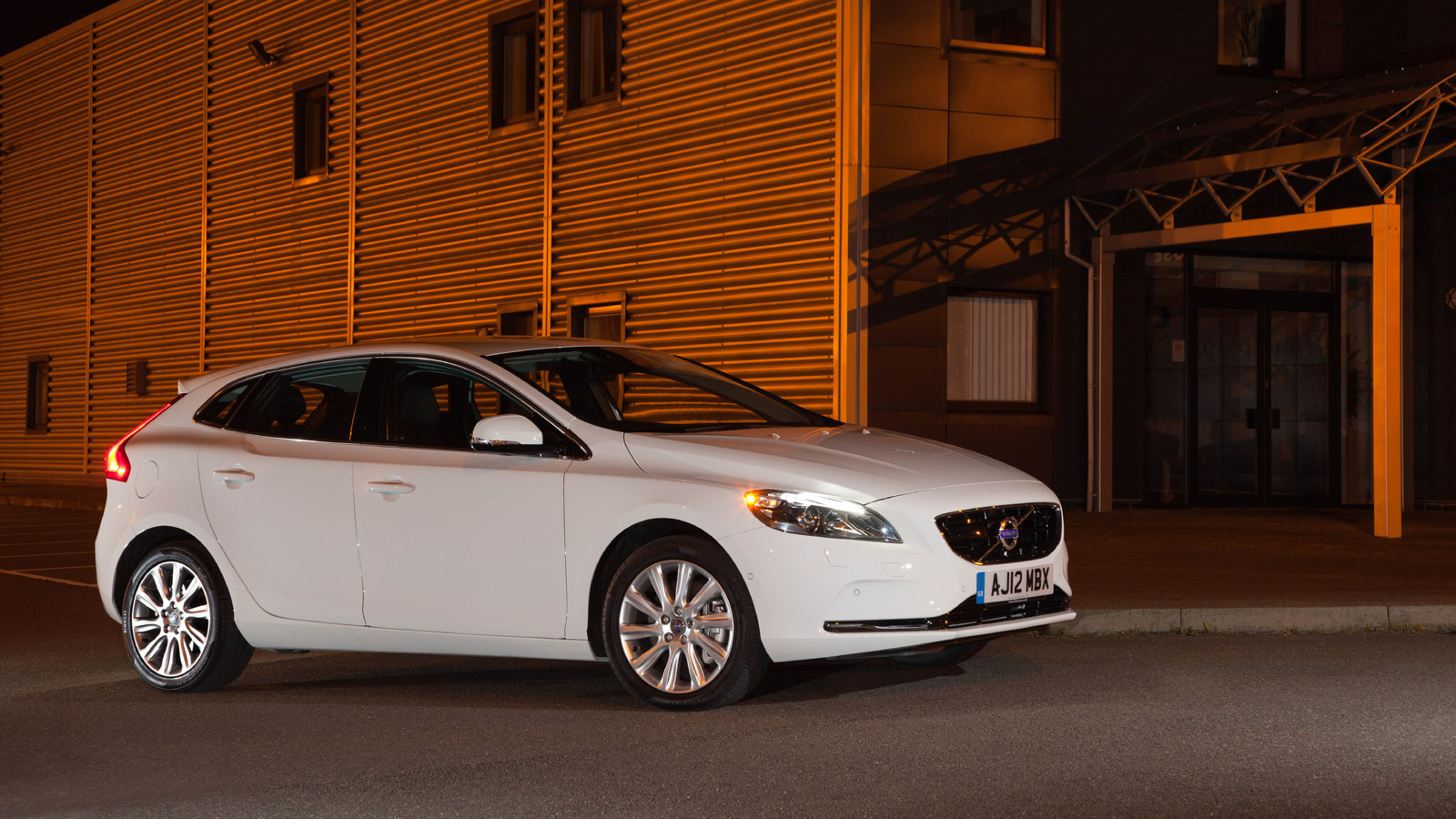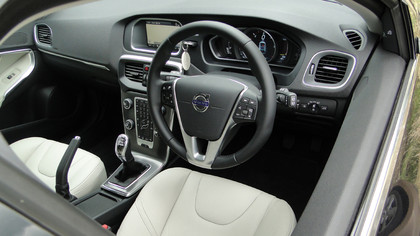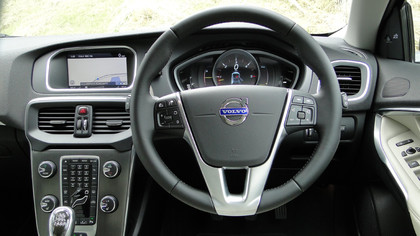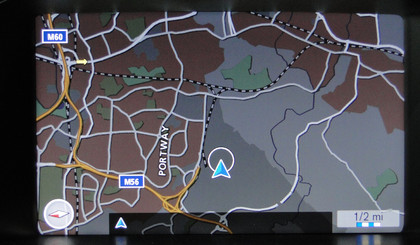Tech-tastic Volvo V40 takes the fight to Audi, BMW and Mercedes
Volvo's new premium hatch sports unique safety features and some intriguing tech

A triple whammy of style, technology and unparalleled safety. That's the plan for the new Volvo V40, including industry firsts like pedestrian airbags as standard across the range and a slick new all-LCD instrument cluster.
According to Volvo, it's also their most important new car for a generation. It's a chance to take on BMW, Audi and Mercedes in the burgeoning premium hatchback class. That's a tough task. Is the new V40 up to it?
Forget about the Focus
The V40 basics involve a conventional five-door hatchback layout. Whisper it, but the underpinnings are derived from the Ford Focus. That's a hang over from Volvo's days as part of Ford's Premier Automotive Group.
Volvo is now owned by Chinese outfit Geely, but the V40 project started under Ford ownership. It's likely the last new Ford-derived Volvo you'll see. Well, apart from additional new variants spun out of the V40 core.
Not that being based on a Focus is a bad thing. It's provides one of the best hatchback platforms ever conceived, including sophisticated independent rear suspension. Engines, meanwhile, are the usual mix of turboed-up four cylinder petrol and diesel lumps.
What about the tech specs?
Anywho, we're all about the tech here on TechRadar, so let's get started. Starting with one of the more impressive elements, Volvo has cooked up an new LCD display to replace conventional analogue instrument dials.

Digital instruments have been tried repeatedly during the history of the car and usually come up wanting. But recently, a few manufacturers have used LCD panels to create virtual dials. That's Volvo's ruse, too.
Sign up for breaking news, reviews, opinion, top tech deals, and more.
The main benefit is configurability. Volvo offers three main modes for the display – ECO, Performance and Elegance. They're pretty self explanatory, but check out the video below to see exactly what's on offer.
Apart from the ability, for instance, to switch the central dial between speedo and rev-counter duties, the LCD display also allows other information to be delivered to the driver, such as warnings for local speed limits.
Reading the signs
On that subject, the V40 generates those speed limit prompts courtesy of a camera mounted in windscreen above the rear-view mirror. Cleverly, it reads road signs as you blatt along.
However, what the system doesn't have is a database of local speed limits built into the navigation system. Nor does the system have any kind of internet connectivity to download data.
Which brings us neatly to the broader subject of in-car infotainment and the Volvo Sensus platform, which is perhaps the V40 weakest point. The good news is that what Sensus does, it usually does well.

The Bluetooth interface, for instance, is very simple to set up and works flawlessly for both voice calls and streaming audio. The navigation system is likewise intuitive and accurate and the onscreen element of Sensus is clean, unpretentious and easy to use.
There's voice control, too, which is about as functional as anyone else's, which is to say not hugely. But overall, Sensus in the V40 feels like a well developed system.
Connectivity conundrum
What it is not, however, is cutting edge. There's no integrated internet connection nor support for piggy backing on your smartphone's connection. So that means you can forget about things like Google Local Search or Google Send to Car. The same goes for internet radio or social networking apps, which are just beginning to take off in-car.

Notably most if not all of those online features are available in some form from what Volvo would like to think is the core competition, namely the Audi A1, BMW 1 Series and Mercedes A-Class.
Still, if there are some holes in the V40's infotainment clobber, it looks pretty much impregnable when it comes to driver aids and safety tech.
Technology and cars. Increasingly the twain shall meet. Which is handy, because Jeremy (Twitter) is addicted to both. Long-time tech journalist, former editor of iCar magazine and incumbent car guru for T3 magazine, Jeremy reckons in-car technology is about to go thermonuclear. No, not exploding cars. That would be silly. And dangerous. But rather an explosive period of unprecedented innovation. Enjoy the ride.